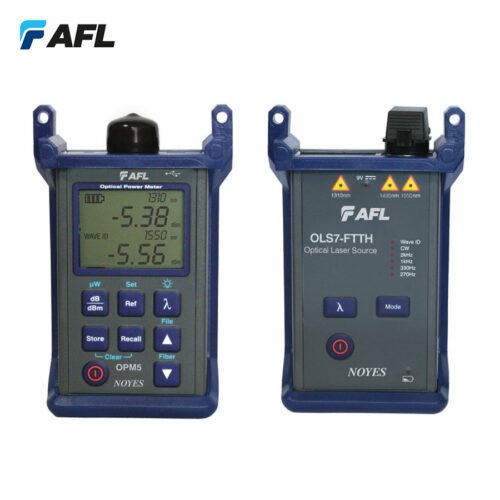Top 5 benefits to implement robotic vision in your factory
All You Required to Learn About Robotic Vision and Its Applications in Advanced Optical Measurement Systems
Robotic vision stands for a significant advancement in the crossway of computer vision, expert system, and artificial intelligence. This modern technology improves the accuracy of optical measurement systems, enabling real-time data analysis and enhanced quality assurance. Its influence covers several markets, from producing to health care. Nevertheless, the evolving landscape of robotic vision questions concerning future capabilities and applications (optical fibre diameter analyser). What technologies exist in advance in this transformative field?
Recognizing Robotic Vision: Key Concepts and Technologies
Robotic vision incorporates the technologies and techniques that make it possible for makers to interpret and recognize aesthetic details from their setting. This area incorporates aspects of computer system vision, expert system, and artificial intelligence to facilitate automated decision-making based upon aesthetic information. Trick concepts consist of image processing, which entails the improvement and analysis of images to draw out significant attributes, and object acknowledgment, which enables machines to identify and categorize objects within a scene.

The Integration of Robotic Vision With Optical Measurement Systems
As markets increasingly require precision and effectiveness, the integration of robot vision with optical dimension systems has emerged as a transformative method. This harmony permits robotics to regard and translate their environments, enhancing the ability of optical dimension systems to analyze and assess items with exceptional accuracy. By furnishing optical sensing units with sophisticated imaging modern technologies, robotic vision enables real-time data collection and processing, helping with instant modifications to dimension parameters.
Moreover, the combination equips automated systems to find variations in dimensions, surface area high quality, and alignment, which are crucial in quality assurance processes. Boosted algorithms, such as equipment knowing, more enhance this integration by boosting the systems' ability to adjust to various environments and situations. The combination not just simplifies dimension procedures but likewise decreases errors, ensuring that items fulfill strict market criteria, therefore strengthening the role of robotic vision in the future of optical measurement systems.
Applications of Robotic Vision in Production
In modern-day production settings, the use of vision systems has actually transformed manufacturing procedures by enabling machines to carry out tasks with remarkable accuracy and rate. Robotic vision systems are significantly used for quality assurance, where they inspect products for flaws and guarantee adherence to specifications. These systems utilize cameras and advanced algorithms to evaluate items in real-time, considerably minimizing the danger of human mistake.
Furthermore, robot vision helps with automation in production line, enabling robotics to accurately determine parts and construct them with minimal downtime. This innovation additionally improves inventory navigate to this website monitoring, as vision systems can monitor stock levels and detect discrepancies, assuring a seamless supply chain.
Additionally, robotic vision help in the execution of smart factories, where information from vision systems can be integrated with various other technologies to enhance process. Overall, the applications of robot vision in manufacturing demonstrate its essential role in improving efficiency, high quality, and productivity throughout different sectors
Robotic Vision in Healthcare: Changing Client Treatment

In rehab, robotic vision aids in keeping an eye on client progression and tailoring treatment sessions to individual requirements. It supports doctor by automating tasks such as information collection and person surveillance, permitting more time to concentrate on straight individual communication. In addition, robotic vision boosts telemedicine by enabling remote medical diagnosis and digital examinations, connecting the space in between patients and doctor. Overall, the application of robot vision in health care is revolutionizing client care, bring about boosted results, performance, and individual fulfillment.
Future Trends and Growths in Robotic Vision Technology
The quick evolution of robot vision innovation assures to additionally enhance its applications throughout various industries, including health care. Future trends show a considerable shift in the direction of including man-made knowledge and artificial intelligence, allowing systems to gain from large datasets and enhance precision with time. Enhanced sensing unit technologies and deep discovering algorithms are expected to refine things acknowledgment capabilities, enabling robotics to interpret complex environments a useful reference lot more effectively.

The assimilation of increased truth (AR) with robotic vision will likely change just how robotics aid in medical treatments and diagnostics. This harmony will certainly facilitate real-time data visualization, boosting decision-making processes. Additionally, miniaturization of components will result in more compact and versatile robotic vision systems appropriate for a selection of tasks. As these innovations unfold, industries will witness enhanced automation and efficiency, solidifying robot vision as a cornerstone of ingenious technological remedies.
Frequently Asked Questions
What Are the Main Parts of a Robotic Vision System?
The major components of a robot vision system consist of cams for image capture, processors for information analysis, algorithms for analysis, and actuators for activity. Together, site here these components allow robots to regard and engage with their atmosphere efficiently.
How Does Robotic Vision Improve Precision in Measurements?
Robotic vision boosts dimension accuracy by using sophisticated imaging innovations, allowing accurate things discovery and spatial analysis. This capacity minimizes human error, boosts repeatability, and enables real-time changes, eventually boosting overall measurement integrity and effectiveness.
What Industries Benefit A Lot Of From Robotic Vision Modern Technology?
Numerous sectors profit significantly from robot vision modern technology, including manufacturing, medical care, agriculture, and logistics. These fields use improved precision, efficiency, and automation, causing boosted productivity and decreased functional prices in their respective processes.
Can Robotic Vision Solutions Work in Low-Light Issues?
Robotic vision systems can certainly function in low-light problems, using innovative sensing units and formulas to enhance image clearness. This capacity permits them to do properly in different settings, including commercial and surveillance applications, despite minimal illumination.
What Are the Expenses Linked With Implementing Robotic Vision?
The prices connected with applying robot vision differ substantially, influenced by components such as electronic cameras, software application, and combination. Additional expenses consist of upkeep, training personnel, and potential upgrades to existing systems, which can accumulate over time.